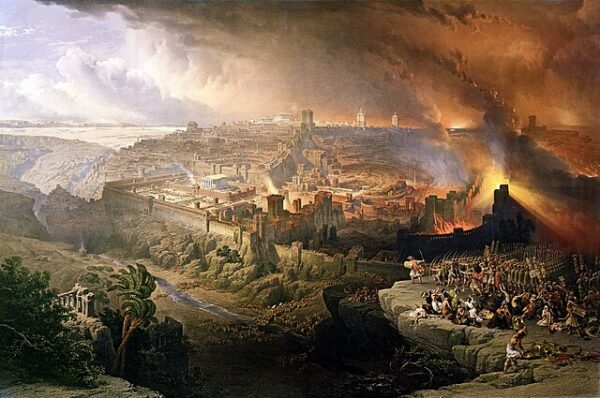On July 12, 70 CE, a pivotal event in Jewish history unfolded during the First Jewish-Roman War, also known as the Great Revolt. This date marks the destruction of the Second Temple in Jerusalem, a catastrophe that had far-reaching consequences for the Jewish people and their cultural and religious practices.
The Second Temple, originally constructed in 516 BCE following the return of Jewish exiles from Babylonian captivity, replaced the First Temple, which had been destroyed by the Babylonians in 586 BCE. As the heart of Jewish religious, cultural, and social life, the Second Temple was significantly renovated and expanded by King Herod the Great.
The First Jewish-Roman War, which began as a Jewish revolt against Roman rule, culminated in a brutal siege of Jerusalem by Roman forces under the command of Titus Flavius Vespasianus, who would later become Emperor Titus. The siege commenced earlier in 70 CE, with Roman legions encircling Jerusalem and gradually tightening their grip on the city. Inside the walls, Jewish defenders were weakened by internal factions, further compromising their ability to withstand the Roman assault.
By July 12, after months of intense fighting and desperate resistance, the Roman army breached the walls of Jerusalem. The Romans, led by Titus, overwhelmed the remaining Jewish forces and stormed into the city. The Temple Mount, the holiest site in Judaism and the location of the Second Temple, became the focal point of the battle. Roman soldiers, driven by their desire for victory and plunder, set fire to the Temple, leading to its ultimate destruction.
The destruction of the Second Temple on July 12, 70 CE, was a cataclysmic event for the Jewish people, marking the end of an era of centralized worship in Jerusalem and ushered in a period of dispersion and exile known as the Jewish Diaspora. The loss of the Temple had profound religious, cultural, and psychological effects on Judaism, necessitating a reconfiguration of Jewish religious practice and identity.
For the Romans, the destruction of the Temple symbolized their victory and dominance over Judea. The Arch of Titus in Rome, built to commemorate Titus’s triumph, prominently depicts scenes of the spoils taken from the Temple, including the menorah and other sacred artifacts.



